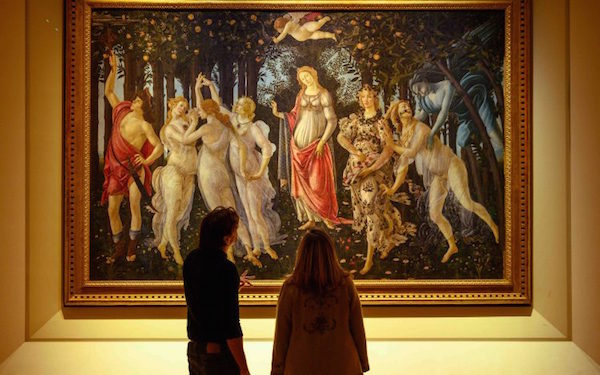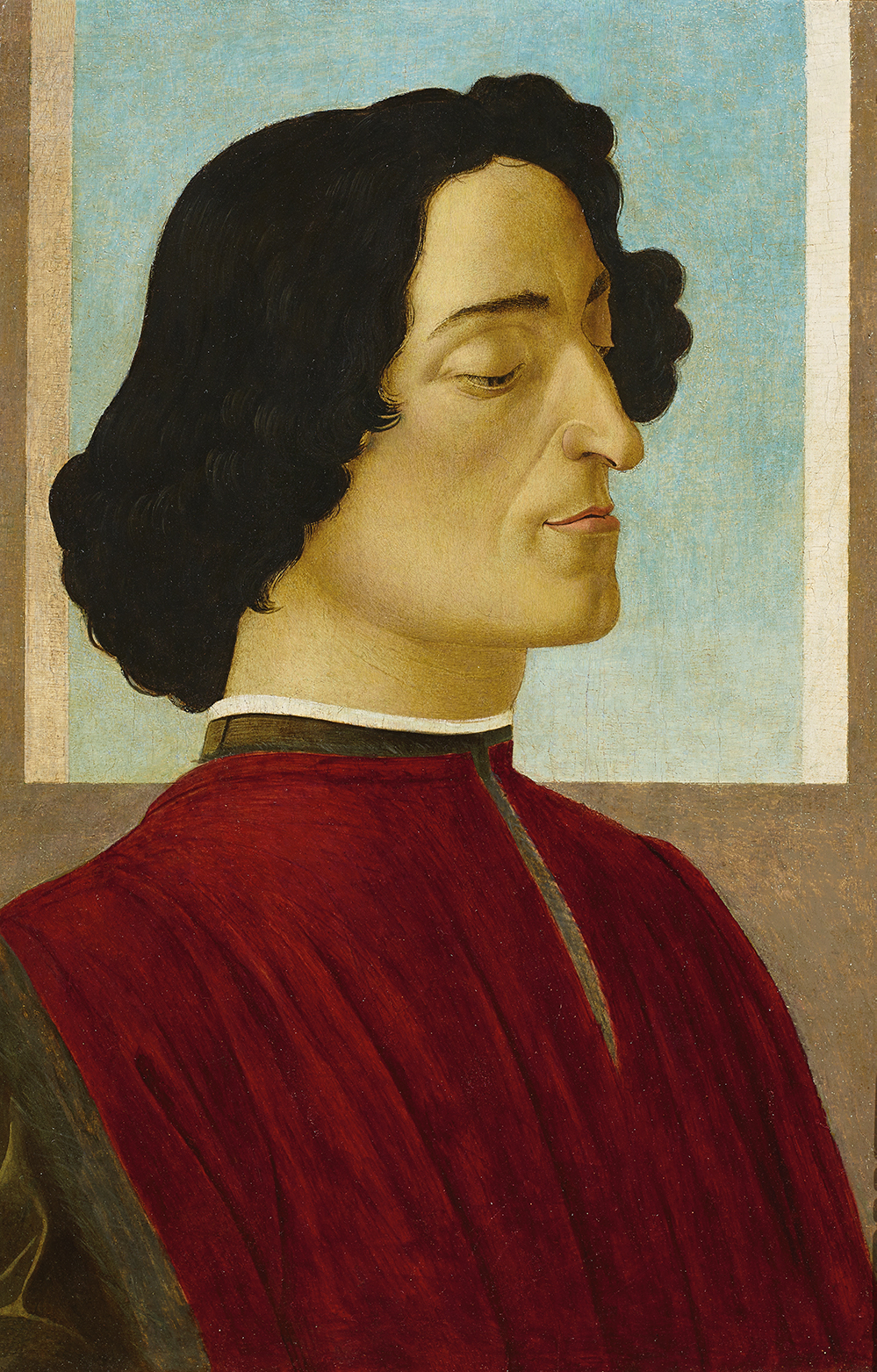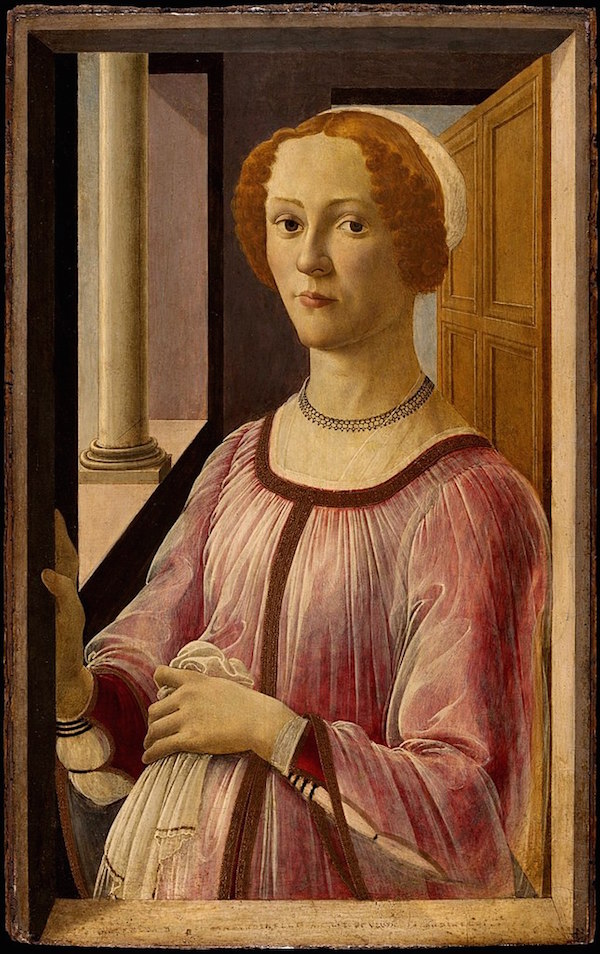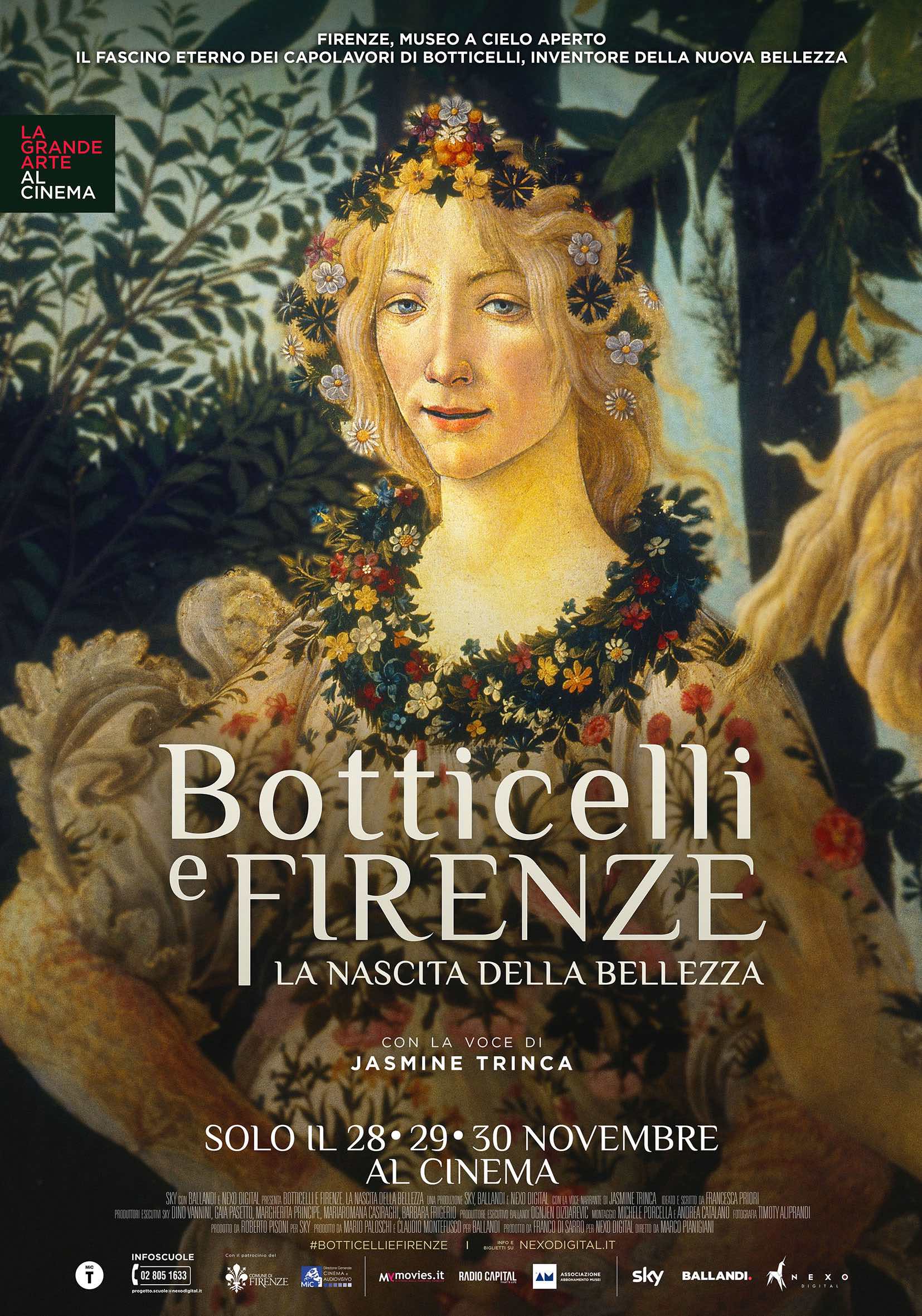Sandro Botticelli, Allegory of Spring (detail), Gallery of Statues and Paintings of the Uffizi, Inv. 1890 no. 8360
From Andy Warhol to David LaChapelle, from Jeff Koons to Lady Gaga, there are really many contemporary artists sensitive to the charm of Sandro Botticelli, and the public is no different. What is the secret of the Renaissance master? From 28 to 30 November we will find out at the cinema in an unpublished documentary. Written by Francesca Priori, directed by Marco Pianigiani, produced by Sky, Ballandi and Nexo Digital, Botticelli and Florence. The Birth of Beauty brings us face to face with an artist that few really know. With the narrative voice of Jasmine Trinca, we will immerse ourselves in the atmosphere of fifteenth-century Florence, to then return to the present and admire the master’s masterpieces in their respective museums. Leading the dances will be some of the leading experts of the work of Botticelli and the Renaissance, traveling between the court of Lorenzo the Magnificent and the incendiary sermons of Savonarola, between the alternating fortunes of the master and the unstoppable Botticelli-mania that has invested the contemporary collective imagination, influencing fashion, photography, the world of entertainment.
“Botticelli is a character to be discovered”, says the author Francesca Priori: “Everyone knows the Spring and the Venus, unique masterpieces. But beyond these icons there is a multitude of wonderful works that express beauty and intelligence, which are the result of a very interesting research journey that lasted a lifetime and which manage to communicate on a universal level. This is the reason why, back in 2018, I proposed this project to Sky: to make Botticelli’s world known to the public in its entirety. The documentary was ready to hit theaters just when the pandemic broke out. Two years since then, it was exciting to see him again with new eyes. It seems incredible, but a film had never been made about Botticelli: the documentaries made in the past concerned particular aspects of his work, but a complete cinematic portrait was missing”.
Trailer of Botticelli and Florence. The Birth of Beauty I Courtesy Nexo Digital
The fame of Botticelli’s paintings is such as to obscure his person: the general public knows very little about him… What was he like?
“Among the scholars we interviewed there are those who, like Professor Jonathan Nelson of Syracuse University in Florence, have studied every document useful for reconstructing Botticelli’s life. What emerges is a truly anomalous character. The painters of his time were often entrepreneurs at the head of large workshops. Instead, he always worked at his home, with his family, and never left Florence except for a one-year stay in Rome. He has spent his entire existence in the same neighborhood, from which he only left to frequent the Medici villas of Careggi. He was a prankster and paid no attention to money: he hadn’t yet brought home Sixtus IV’s money who had already spent it, it’s no coincidence that he died in poverty. He was someone who lived for art, always following his own taste and ideas. He was a cultured artist, who spoke on an equal footing with the poet Angelo Poliziano, his landlord, and with the philosopher Marsilio Ficino, two prominent figures in Renaissance culture. He was famous for his mouthful jokes, but then he recited the Divine Comedy and translated it into images. In short, he was a rather original type, and also a handsome man judging by his self-portrait”.
What excites you about Botticelli’s character and art?
“What excites me the most is his search for beauty, the attempt – perfectly successful – to create a new ideal of male and female beauty. Botticelli’s is an absolute beauty, capable of going beyond gender distinctions. Maybe that’s why it comes so directly at it. His is a world of freedom. Botticelli was not inspired by ancient art or nature: thanks to a remarkable talent as a designer, he has developed a form of extreme stylization that makes his language universally recognizable. Despite being a court painter, he has always been outside the box, against the tide. I found it exciting to discover how he ranged between the genres of painting while always remaining himself, passing from the sacred to the profane, up to the painful religiosity of his last period. it is incredible that, after the fall of the Medici and the advent of Savonarola, Botticelli was forgotten for over 300 years, until he was rediscovered by the Pre-Raphaelites”.

Botticelli and Florence. The birth of beauty, a film by Francesca Priori and Marco Pianigiani produced by Sky with Ballandi and Nexo Digital
Why is Botticelli so popular with the public and contemporary creatives?
“In his art there is harmony, drawing, colour, experimentation. Botticelli worked all his life to reach a synthesis of the highest level. Like when you write a poem, he tried to get to the root of what he wanted to express, making his work immortal and universal.
Fifteenth-century Florence comes to life again in the film, emerging from the background to take on a co-protagonist role…
“In the fifteenth century Florence was an extremely lively and avant-garde city, like New York in the eighties! In a few meters, around the Basilica of Santa Novella, the workshops of an impressive number of exceptional artists were concentrated, from Verrocchio to Pollaiolo. They produced everything: altarpieces, tapestries, goldsmith objects… Like in a single forge, the artists lived side by side and constantly confronted each other. In Lorenzo de’ Medici’s garden you could meet sixteen-year-old Michelangelo, who was almost a relative to the lords of Florence, an incredible painter like Botticelli and a genius like Leonardo. Just like New York in modern times, Florence was also the heart of world finance: Florentine bankers made and unmade the fortunes of the pope, the kings of France and England… Despite the golden image we have today, the society of Renaissance was extremely violent, bloodied by vicious power struggles. Living there must have been quite difficult, even for an artist.”

Sandro Botticelli, Portrait of Giuliano de’ Medici. Carrara Academy, Bergamo
Botticelli experienced the history of Florence on his own skin. What traces remain in his paintings?
“In Botticelli’s paintings, as in those of many of his contemporary artists, we can recognize the faces of many powerful figures of the Renaissance. It’s impressive to see them so well characterized and described in detail, you can almost touch them. Among the beautiful portraits made by Botticelli, that of Giuliano de’ Medici stands out, who met his death in the Pazzi Conspiracy: a truly interesting character, the protagonist of a masterpiece that has been on show in Milan, in Daniel Libeskind’s Tower in City Life”.
If we looked at the Spring and the Birth of Venus with the eyes of a Renaissance man, we would recognize a rich web of symbols and philosophical references. Today those paintings are decidedly pop images…
“I think Botticelli condensed the culture of the world in which he lived in painting. In his paintings there are a thousand hidden meanings: we could give meaning to every flower, every gesture, every color. There is a close correspondence between philosophy, poetry, literature produced in Renaissance Florence and Botticelli’s paintings. Today, however, his art speaks directly to our emotions and also to our unconscious ”.

Sandro Botticelli, Portrait of Smeralda Bandinelli. 1472. Victoria and Albert Museum, London
Besides the universally known icons, which works should we absolutely rediscover?
“Definitely the portraits. A really interesting painting is the Portrait of Smeralda Bandinelli, now in the Victoria and Albert Museum, London. Before this painting, female portraits were almost always in profile. Botticelli shifts the point of view and places Smeralda in three quarters, so that she looks at the viewer: a revolution, considering that the custom of the time required women to keep their gaze down. Botticelli is an avant-garde man. His Venus she is naked: how many female bodies seen from the front do we have in that period in Italian art?”.
From a cinematographic point of view, what are the characterizing choices of the film?
“The film will be shown in 50 countries around the world. Therefore we have chosen a direct and linear structure, easily usable for different cultures and audiences, for those who already know Botticelli well and for those who don’t know him at all. Alongside the images of the paintings, we find re-enactments that give color and bring back to life the atmospheres and characters of the Florentine Renaissance. I asked Marco Pianigiani to enter Botticelli’s pictorial universe with delicacy, but also with a little suspense. Inside the Uffizi, for example, the works suddenly light up in the dark, like apparitions. In the staging we have avoided in every way the forcing. It’s not easy to turn costume scenes into tableau vivant like Mark did. On the one hand we have the story of the paintings and the contributions of great experts, on the other the marvelous imagination of the director, which supports the narration and stimulates the emotions”.
What challenges did you face in making Botticelli and Florence. The birth of beauty?
“We strongly wanted a team of top-level experts, different from each other yet compatible. We succeeded, but it wasn’t easy. Not everyone has the same opinions and the resulting comparison is decidedly interesting. For example, no one knows whether Botticelli really became a follower of Savonarola…”.

Poster of Botticelli and Florence. The Birth of Beauty I Courtesy Nexo Digital
Read also:
• Put a Botticelli on the Libeskind Tower

